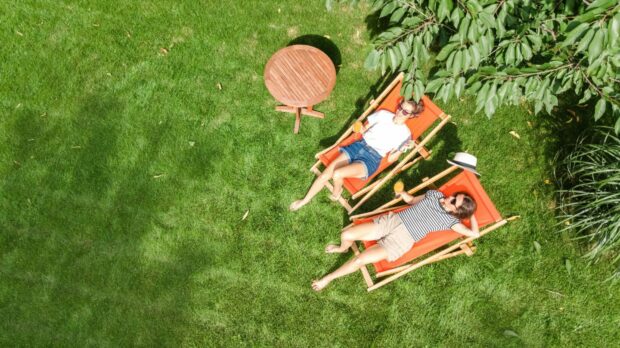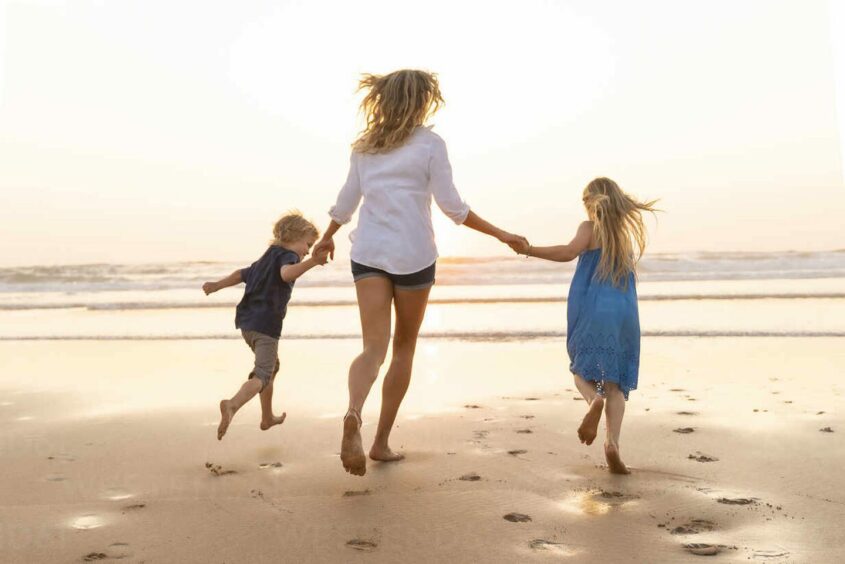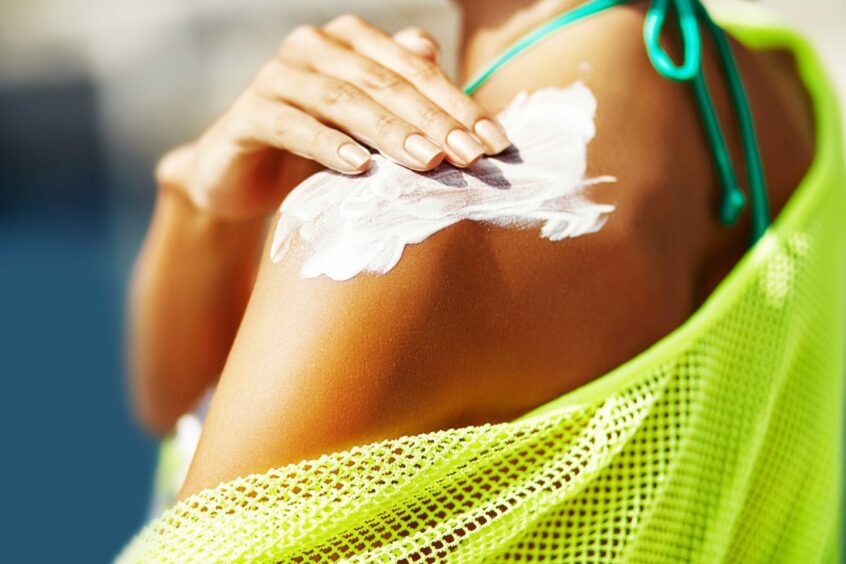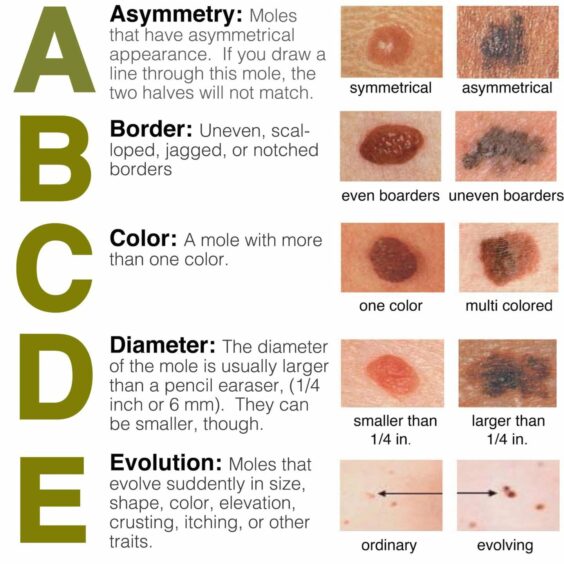When it comes to sun and skin damage, it’s tempting to assume it’s more of a problem for those living abroad.
-
Some Press and Journal online content is funded by outside parties. The revenue from this helps to sustain our independent news gathering. You will always know if you are reading paid-for material as it will be clearly labelled as “Partnership” on the site and on social media channels.
This can take two different forms.
“Presented by”
This means the content has been paid for and produced by the named advertiser.
“In partnership with”
This means the content has been paid for and approved by the named advertiser but written and edited by our own commercial content team.
And yet, even in Scotland we should be paying close attention to the potentially harmful effects of UV rays – especially as summer starts its approach! In fact, this year’s Sun Awareness Week (running Monday 1 to Sunday 7 May) is all about the importance of sun protection at home in the UK.
Here’s what the skin experts at Profile Aesthetic in Aberdeen have to say about sun safety, reducing the signs of skin damage and getting a healthy glow as we enjoy the (hopefully!) warmer weather to come, whether you’re sticking close to home or heading abroad.
What you need to know about sun and skin damage
Believe it or not, despite our notoriously bad weather, it’s still possible to get sunburns and damage your skin in Scotland.
Paul Drake, consultant plastic surgeon and medical director at Profile Aesthetic notes: “Skin cancers like basal cell carcinoma and squamous cell carcinoma are really common in Scotland. And the risk of developing melanoma – the deadliest form of skin cancer – more than doubles in people with a history of sunburn compared with people who have never been sunburnt.”
As well as the potential health impacts, sunlight also accelerates the skin aging process. Fiona Leitch, who owns Profile Aesthetic with Paul and is an experienced aesthetic nurse, explains: “You have UVA and UVB rays – UVB is the burning one, and UVA is the ageing one. They’re both detrimental to your skin health, without a shadow of a doubt.”
And don’t forget about the risks of sunbeds either. As Paul points out, the World Health Organization (WHO) classified exposure to UV-emitting tanning devices (sunbeds) as carcinogenic back in 2009. In fact, people who have used a sunbed at least once at any stage in their life have a 20% higher risk of developing melanoma than people who have never used a sunbed.
Although there is sometimes a temptation to get a head-start with tanning by using sunbeds, this should be discouraged, as the risks far outweigh any perceived benefits.
How to prioritise sun safety in your skincare routine
While we should be aware of the potential dangers of sun damage to our skin, that doesn’t mean we can’t also enjoy some restorative time outside. The key is to look after your skin and think about sun protection all year round, incorporating it into your daily routine.
Fiona advises: “You need to feed your skin with antioxidants. A good medical grade skincare routine is essential, so is a good diet, plenty of fluids and daily SPF 50, applied two or three times a day – that’s the absolute crux of it.
“That’s in the winter as well as in the summer, because it’s daylight that does the ageing damage.
“It’s all about a healthy lifestyle and protecting your skin, inside and out.”
Whether at home or abroad this summer, the best advice is to use a high factor sunscreen, avoid exposure during the hottest times of day and where possible cover up and put a hat on. Plus, sunscreen should be re-applied regularly, especially after sweating or swimming.
6 other things to bear in mind about sun safety
- You’ll still get Vitamin D! Sunscreen does not completely prevent Vitamin D production and most people will generate sufficient amounts even when using sunscreen.
- Take special care with your face. People routinely miss about 10% of their face when applying sunscreen, leaving them vulnerable to sunburn and skin cancer.
- Remember your ears! The ears are a common site of skin cancer as people often forget to apply sunscreen to their ears.
- Look after your eyes. Sunglasses have an important role to play in protecting the delicate eyelid skin from UV radiation, they don’t just make it easier to see in bright sunlight.
- Your diet is important too. There are foods that can mitigate against some of the harm from UV radiation – particularly tomatoes, kale and spinach – although it’s not a substitute for sunscreen. (Evidenced by a study from Leibniz Research Institute).
- Avoid using sunbeds. It’s not worth the risk to your skin or health.
Signs of sun damage
If you’re worried that the sun has already led to skin damage, get it checked over. Paul advises: “Anything that’s appeared on your skin and hasn’t gone away after around three weeks should be examined by an expert.”
According to the NHS, some potential abnormalities to be aware of include lumps, ulcers, lesions or skin discolouration. Of course, it may not be skin cancer or anything to worry about, but it’s always worth speaking to a health professional.
When it comes to potential skin cancer, the British Association of Dermatologists guidance is to follow ABCDE:
- Asymmetry – the two halves of the area may differ in shape or colour.
- Border – the edges of the area may be irregular or blurred, and sometimes show notches.
- Colour – this may be uneven. Different shades of black, brown and pink may be seen.
- Diameter – most melanomas are at least 6mm in diameter. Report any change in size, shape or diameter to your doctor.
- Evolution – if you see progressive changes in size, shape or colour over weeks or a few months, you must seek expert help.
Other signs of skin damage that can make people feel self-conscious include pigmentation, dark spots, broken blood vessels and wrinkles.
So, what can you do if you think your skin is already sun damaged?
How to treat sun damaged skin
The good news is, it’s not too late. Paul says: “It’s never too late to reduce sun exposure. Yes, some damage has been done, but you can stop the ongoing damage and that is very valuable.”
The medical team at Profile Aesthetic are experts in skin cancer identification and provide a surgical option for removal of any suspicious lesions. This includes sending the sample to pathology for analysis, with prices starting at £750.
And as well as adopting sun safety principles into your skincare routine, there are surgical and non-surgical treatments on offer at Profile Aesthetic (which specialises in state-of-the-art procedures, like EmSculpt NEO). Some of these treatments can help reduce the appearance or impact of skin damage.
This includes:
- Advanced skincare products featuring pollution blocking and SPF50 or above.
- Laser treatments to remove benign skin lesions and skin tags, or to reduce the excess pigmentation that comes from sun damage.
- Platelet-Rich Plasma (PRP) therapy to kickstart skin regeneration.
- Microneedling/Mesotherapy to keep your skin in ultimate health, hydrated and protected from the elements.
It’s never too late to feel the benefits of sun safety! Visit Profile Aesthetic in Aberdeen to learn more about options to get your skin looking radiant and feeling healthier. Don’t forget to follow Profile Aesthetic on Instagram or Facebook for the latest updates.



